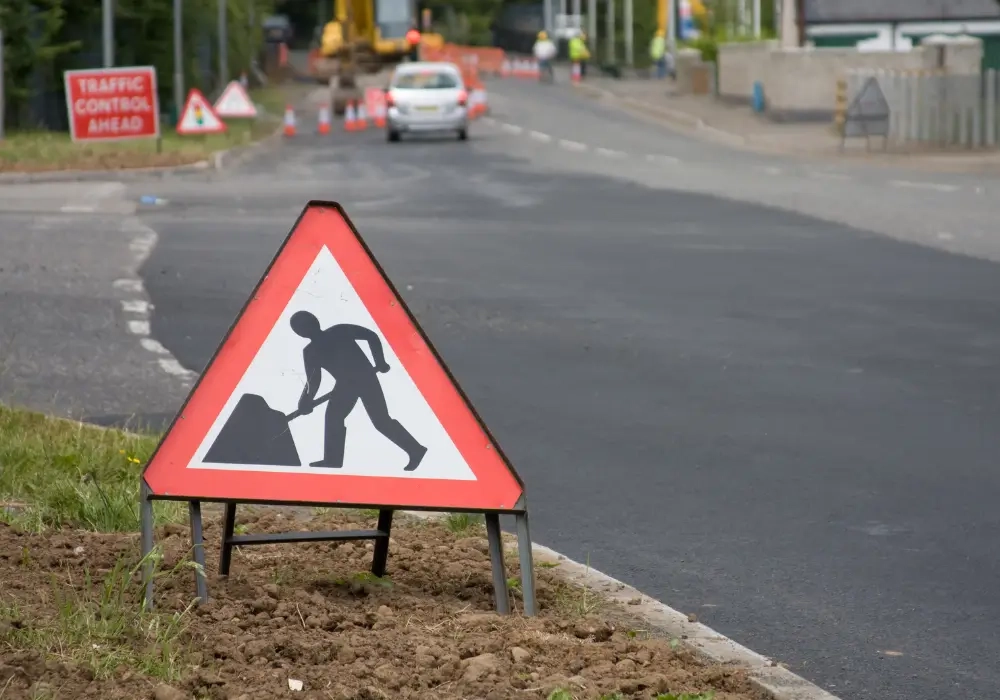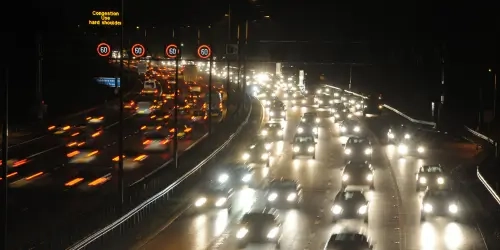Managing a road project, whether a busy highway scheme, a development site or temporary roadworks, demands constant oversight. Incidents can unfold in seconds, and delays in responding can cause major safety risks or operational setbacks.
The challenge many project managers face isn’t whether surveillance is necessary, but which type of technology is the right fit.
Do you need the height and coverage of a CCTV Tower, the mobility of a Redeployable Cameras or the close-up accountability of a Body Worn Camera? This guide breaks down how these systems work so you can decide what fits your project best.
Quick Overview: What Each Solution Does Best
Here’s what each technology brings to road projects:
-
CCTV Towers: Wide-area visibility, up to 6 metres high with near-360° coverage, ideal for large or complex sites where a strong visual presence is needed.
-
Redeployable Cameras: Flexible, mobile units for temporary public road events, or urban traffic monitoring.
-
Body Cameras: Compact, person-worn recording devices. Ideal for capturing real-time evidence and improving safety in direct interactions.
Why Surveillance Matters on Road Projects
Road projects are high-pressure environments. You’re balancing safety for workers, keeping the public moving and protecting expensive equipment on roadwork construction sites.
Threats can come from many directions:
-
Organised crime groups targeting plant machinery
-
Opportunistic theft
-
Vandalism
-
Anti-social behaviour (ASB) near worksites
Surveillance on road projects gives you control. It deters unauthorised access, captures evidence and helps prevent small issues from spiralling into major delays. When incidents do happen, remote access and live monitoring allow a rapid response that keeps projects moving.
Beyond security, surveillance supports compliance with health and safety standards and strengthens insurance claims with clear evidence.
CCTV Towers: Wide-Area Coverage and Deterrence
CCTV Towers deliver complete site security when fixed infrastructure isn't practical or available. Standing up to 6 metres high with near-360° coverage, these self-contained units monitor wide areas that would be otherwise difficult to secure with traditional security measures.
All our Traffic Management Towers operate autonomously via solar and fuel cell batteries, allowing deployment to live road environments or remote development sites without relying on local infrastructure. They integrate PTZ (Pan-Tilt-Zoom) cameras, night vision, sirens, live voice-down audio and optional Time Lapse and ANPR for vehicle monitoring.
Benefits
-
Wide area coverage: A near-360° field of view that eliminates blind spots across large, complex sites.
-
Visible deterrent: Bright yellow Towers create an immediate psychological barrier against theft, trespassing and vandalism.
-
Autonomous operation: Independent power supply enables deployment anywhere without fixed utilities.
-
Rapid deployment and response: Units can be installed in under an hour, with integration to our mobile keyholding service for fast on-site intervention.
-
Advanced AI-video analytics: Intelligent software distinguishes between genuine threats (e.g. trespassers, road hazards) and false alarms (e.g. wildlife, weather), cutting down wasted callouts.
-
Professional remote monitoring: Always-on feeds link directly to our fully-managed monitoring service for real-time incident response.
Use cases
-
Traffic management environments: Our Traffic Management Tower combines vehicle detection with the optional addition of ANPR for road safety.
-
High-speed road projects: Provide reliable monitoring on motorways and major roads where safety risks are higher.
-
Lay-by surveillance: Deter and detect fly-tipping or anti-social behaviour in roadside lay-bys.
-
Temporary event traffic: Oversee entry points, car parks and diversions during public events.
-
Road construction works: Monitor active roadworks, equipment and safety perimeters.
-
Remote road projects: Provide coverage in areas with no fixed infrastructure.
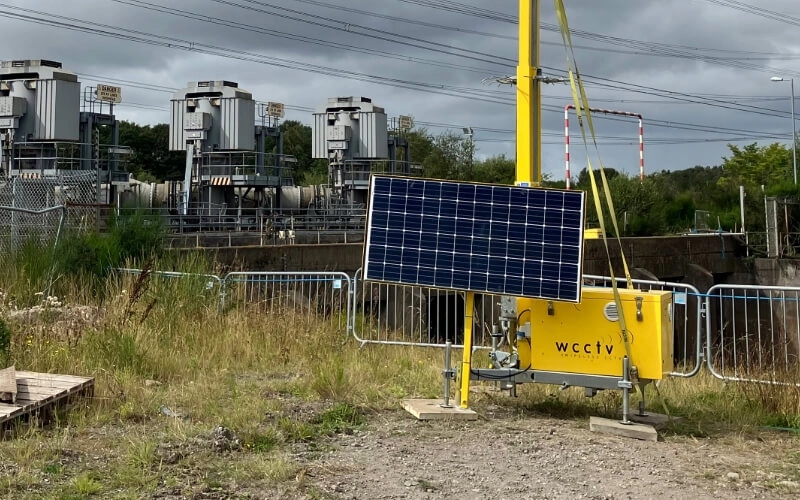
Redeployable Cameras: Flexibility Where It’s Needed
Redeployable Cameras provide quick, movable surveillance in situations where Towers may not be the best fit, such as temporary public road events and urban traffic monitoring. These units can be mounted to streetlights, poles or walls and activated within minutes, delivering HD video, onboard storage and 4G/5G connectivity.
Our Redeployable Cameras are integrated with our cloud-based management platform Stellifii, giving centralised control, diagnostics, live and recorded footage access and scalability across multiple sites. This software makes redeployable cameras ideal for short-term, localised monitoring needs, not for large highways or long-term road projects.
Benefits
-
Rapid installation: Units go live within minutes with no need for fixed infrastructure.
-
Flexible redeployment: Cameras can be moved quickly to cover temporary public road events, diversions or emerging traffic challenges.
-
Cloud-based management: Stellifii platform provides centralised monitoring, diagnostics and scalability.
-
Cost-effective coverage: Ideal for short-term or supplementary surveillance without committing to fixed installations.
-
Smooth integration: Designed for urban settings, providing reliable coverage in busy environments where traditional systems may be harder to deploy.
Use Cases
-
Monitoring congestion in urban areas: Redeployable Cameras can track traffic build-ups around city road projects, diversions or roadworks where vehicle flow changes frequently.
-
Monitoring residential areas for fly-tipping: Redeployable cameras can be positioned in hotspots such as housing associations, alleyways and other vulnerable community spaces to deter illegal dumping and keep local areas safer.
-
Public road monitoring for temporary events: Ideal for festivals, parades or short-term works that affect local roads, giving project managers visibility without needing permanent infrastructure.
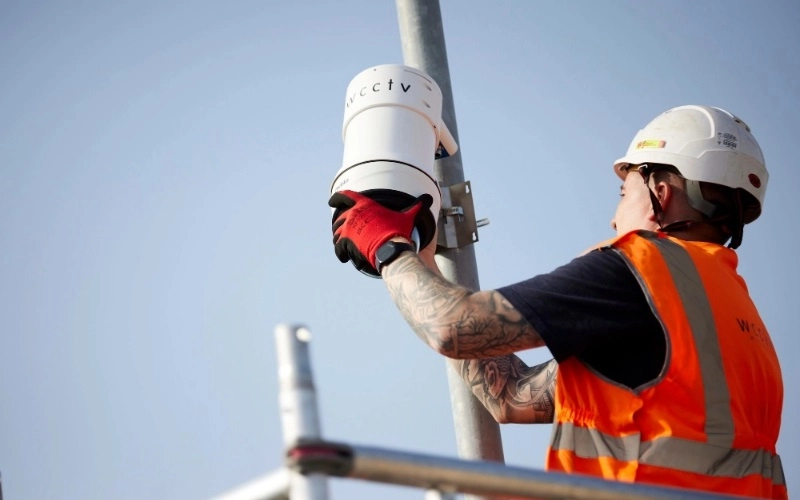
Body Worn Cameras: Accountability on the Ground
Body Worn Cameras provide frontline protection for staff interacting with the public or operating in high-risk situations. Worn by traffic marshals, enforcement officers or road workers, they capture high-definition, time-stamped video and audio from the wearer’s perspective.
Features include a configurable pre-event recording buffer, a forward-facing screen to de-escalate confrontations, a water and dust-resistant design and a full-shift battery life with optional extended packs. Our Body Cameras can work alongside Towers and Redeployable Cameras, giving managers real-time, ground-level visibility to protect workers and ensure their safety on road traffic projects. This helps ensure accountability, supports health and safety and reinforces compliance on road traffic projects.
Benefits
-
Staff protection: Captures interactions for safety and accountability.
-
Evidence quality: High-definition, time-stamped video and audio for investigations or incident review.
-
De-escalation support: Forward-facing screen encourages compliance during projects.
-
All-weather reliability: Water and dust-resistant with full-shift battery life.
-
Integrated oversight: Works alongside Towers to provide complete situational awareness.
Use Cases
-
Traffic marshals and road workers: Document interactions with road users and site visitors.
-
Enforcement officers: Support compliance checks and incident reporting.
-
High-risk sites: Capture evidence of trespassing, vandalism or safety violations.
-
Incident review: Provide ground-level footage to review health and safety or compliance incidents, helping managers learn from events and improve site practices.
-
Combined operations: Supplement Towers and Redeployable Cameras to cover blind spots and personnel activity.
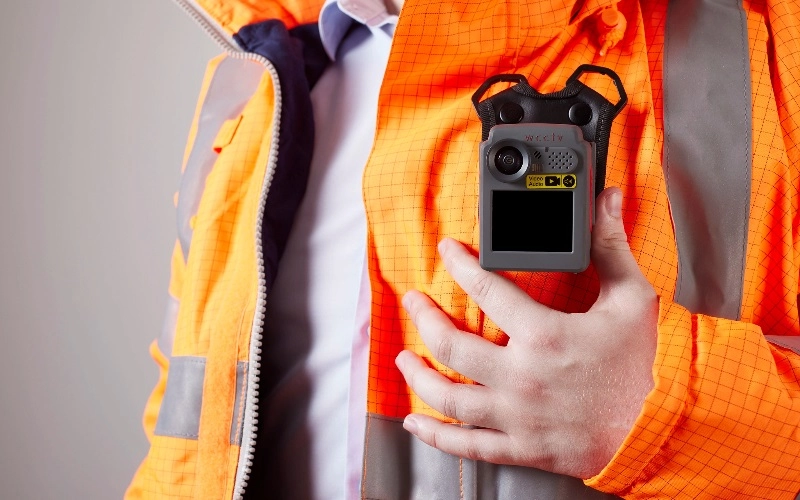
Tackling Common Myths
Despite their differences, it’s common for road project managers to view all camera types as interchangeable. This can lead to misplaced investments and weak security.
Let’s debunk some of the most frequent myths:
Myth #1: All cameras serve the same purpose
Not true. Towers provide for visibility and deterrence for high-speed roads and areas with specific project requirements, while Redeployable Cameras offer mobility for urban settings or temporary public road events. Body Cameras, meanwhile, capture on-the-ground evidence and support worker safety and compliance. Overlooking these distinctions can leave gaps in coverage.
Myth #2: Body cams are enough for traffic monitoring
Body Worn Cameras capture immediate, person-to-person interactions, but they can’t oversee diversions or entire construction perimeters. For traffic monitoring, you need the elevated perspective of a Tower.
Myth #3: Redeployable units can replace towers
Redeployable cameras are flexible, but they lack the deterrent presence and wide-area coverage of a Tower. They are not suitable for high-speed roads or large traffic projects. Instead, they come into their own for urban traffic monitoring and public events, making them a complement to Towers rather than a replacement.
Checklist for Managers: Picking the Right System
When weighing up security solutions for road projects, consider these key questions:
-
How big is the project? Larger or long-term projects benefit from CCTV Towers for consistent, wide-area coverage.
-
How often do risks shift? If you’re dealing with temporary public events, changing urban hotspots, Redeployable Cameras provide quick, flexible coverage.
-
Do workers face direct interaction risks? Body Worn Cameras protect staff and record incidents in real-time.
-
Do you need full visibility? Rather than worrying about combining multiple camera types, focus on the professional security service behind them. Our fully-managed service monitors Towers and Body Cameras in real time, delivering rapid response, supporting compliance, and keeping your workers safe.
By answering these questions, managers can match the right system (or combination of systems) to their security needs, project scope, risks and budget.
Read more: How Mobile CCTV Towers and Body Cameras Transform Temporary Road Security
Choose the Right Surveillance for Road Projects
CCTV Towers, Redeployable Cameras and Body Worn Cameras are complementary tools designed to meet very different needs on a road project.
Towers deliver wide-area deterrence and are the go-to for highways and large road projects. Redeployable Cameras add flexibility for temporary public events, urban traffic monitoring or residential areas, while Body Cams protect frontline staff. Choosing the right mix gives project managers the confidence that their people, assets and timelines are safeguarded from every angle.
Contact our managed support and let us show you how these systems are not just cameras on poles or uniforms, but rather proactive, connected solutions for safer, more efficient road projects.
FAQs
What’s the difference between CCTV vs body cams for road projects?
The difference between CCTV vs Body Cams road projects often comes down to visibility, flexibility and on-the-ground protection. CCTV Towers monitor large sites and highways with near-360° coverage, while Body Worn Cameras record interactions in real-time, providing evidence of incidents.
How do body worn cameras improve health and safety compliance?
Body Worn Cameras records audio and footage during site visits and conflict situations, including routine inspections. This protects workers and contractors, particularly lone workers in vulnerable positions. The cameras provide evidence of abuse or aggression while supporting insurance claims. They also verify that safety guidance is properly followed during operations.
Are body cameras only used by police forces?
While police and DVSA staff use body cameras to capture dangerous driving and record interactions, road project teams, contractors and site personnel also use them. They protect the workforce, document incidents and maintain a safer environment.
How does live monitoring support road project security?
Live monitoring allows operators to view footage and detect threats while responding in real time. Integrated systems link CCTV Towers, Redeployable Cameras and Body Cams, enabling operators to provide evidence and issue live voice-down warnings. This protects vehicles, equipment and workers across the entire project site.
